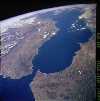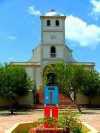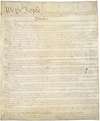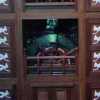 Majestic 12 is the purported code name of a secret committee of scientists, military leaders, and government officials supposedly formed in 1947 by an executive order of US President Harry S. Truman. A major part of alien conspiracy theories, the committee was purportedly formed to investigate the aftermath of the Roswell incident—the alleged crash of an unidentified flying object near Roswell, New Mexico. What documents have lent credence to the existence of such a committee? Discuss
Majestic 12 is the purported code name of a secret committee of scientists, military leaders, and government officials supposedly formed in 1947 by an executive order of US President Harry S. Truman. A major part of alien conspiracy theories, the committee was purportedly formed to investigate the aftermath of the Roswell incident—the alleged crash of an unidentified flying object near Roswell, New Mexico. What documents have lent credence to the existence of such a committee? Discuss
Source: The Free Dictionary
 After a long and troubled history,
After a long and troubled history,  De Witt was a Dutch statesman who played a vital role in the three successive Dutch Wars. He helped end the first in 1654, but the English Restoration was considered a threat to Dutch interests and the conflict was renewed in 1665. He was largely responsible for securing for the Dutch the favorable terms of the treaty that ended the second of the wars and helped form the Triple Alliance against Louis XIV, who nevertheless invaded Holland in 1672. Why was de Witt lynched shortly thereafter?
De Witt was a Dutch statesman who played a vital role in the three successive Dutch Wars. He helped end the first in 1654, but the English Restoration was considered a threat to Dutch interests and the conflict was renewed in 1665. He was largely responsible for securing for the Dutch the favorable terms of the treaty that ended the second of the wars and helped form the Triple Alliance against Louis XIV, who nevertheless invaded Holland in 1672. Why was de Witt lynched shortly thereafter?  At 965,000 sq mi (2,499,350 sq km), the Mediterranean Sea is the world’s largest inland sea. It is surrounded by Europe, Asia, and Africa, and is linked to the Atlantic Ocean via the Strait of Gibraltar. Known as the “cradle of civilization,” it was a superhighway of transport in ancient times, allowing for trade and cultural exchange between communities in the area. The regions surrounding the sea have typically warm, dry, sunny climates. How many states have a coastline on the Mediterranean?
At 965,000 sq mi (2,499,350 sq km), the Mediterranean Sea is the world’s largest inland sea. It is surrounded by Europe, Asia, and Africa, and is linked to the Atlantic Ocean via the Strait of Gibraltar. Known as the “cradle of civilization,” it was a superhighway of transport in ancient times, allowing for trade and cultural exchange between communities in the area. The regions surrounding the sea have typically warm, dry, sunny climates. How many states have a coastline on the Mediterranean?  The Lares rebellion of 1868 was the most notable uprising in a series of failed Puerto Rican rebellions against Spanish rule that began in the 1820s. Best known as El Grito de Lares, or The Cry of Lares, the revolt took place in the town of Lares, where rebels briefly declared independence. Though the rebellion was brutally and swiftly suppressed, Lares has come to be known as the birthplace of Puerto Rican nationalism. Who was declared the republic’s first president during the rebellion?
The Lares rebellion of 1868 was the most notable uprising in a series of failed Puerto Rican rebellions against Spanish rule that began in the 1820s. Best known as El Grito de Lares, or The Cry of Lares, the revolt took place in the town of Lares, where rebels briefly declared independence. Though the rebellion was brutally and swiftly suppressed, Lares has come to be known as the birthplace of Puerto Rican nationalism. Who was declared the republic’s first president during the rebellion? 
.jpg) Mary Mallon was the first person in the US to be identified as a healthy carrier of typhoid fever. In 1904, a typhoid epidemic was traced to homes where she had been a cook. She fled but was located by authorities and forcibly quarantined for several years. In 1910, she was released on the condition that she not take another food-handling job. Discovered cooking again in 1914, she was quarantined for life. Though she herself never had the disease, she infected about 50 people. How many died?
Mary Mallon was the first person in the US to be identified as a healthy carrier of typhoid fever. In 1904, a typhoid epidemic was traced to homes where she had been a cook. She fled but was located by authorities and forcibly quarantined for several years. In 1910, she was released on the condition that she not take another food-handling job. Discovered cooking again in 1914, she was quarantined for life. Though she herself never had the disease, she infected about 50 people. How many died?  The clepsydra, or water clock, is an ancient timekeeper that operates by measuring the regulated flow of liquid into or out of a vessel. It is believed to have been used in Egypt as early as 2,000 BCE, making it one of the earliest known time-measurement devices. Early water clocks were calibrated with a sundial, and they remained the most accurate timekeeping devices until the invention of the pendulum clock in the 17th century. When did knowing the time become important to the common man?
The clepsydra, or water clock, is an ancient timekeeper that operates by measuring the regulated flow of liquid into or out of a vessel. It is believed to have been used in Egypt as early as 2,000 BCE, making it one of the earliest known time-measurement devices. Early water clocks were calibrated with a sundial, and they remained the most accurate timekeeping devices until the invention of the pendulum clock in the 17th century. When did knowing the time become important to the common man?